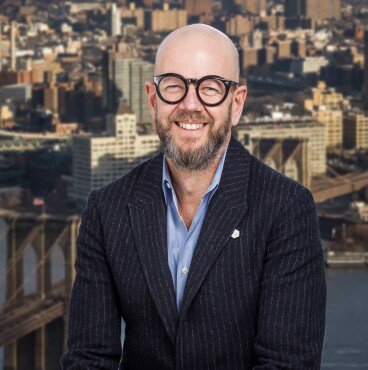Brief • 4 min Read
In The Harris Poll Tracker (Week 99) fielded January 14th to 16th, 2022 among 2,089 U.S. adults, we look at how Americans are concerned about the situation facing our healthcare systems, how Americans prioritize risk of exposure at school with continuing students’ education, how Americans who struggle with depression and anxiety are open to psychedelics as a form of treatment, what consumers think about insurance characters in advertising, and why many Boomers want to only semi-retire.
As a public service, our team has curated key insights to help leaders navigate COVID-19. Full survey results, tables, and weekly summaries can be accessed for free at The Harris Poll COVID-19 Portal. We will continue to actively field on a regular cadence to track the shifts in sentiment and behaviors as the news and guidelines evolve.
COVID’s Hit to Our Healthcare System
The number of COVID hospitalizations across the U.S. has reached a new pandemic high, causing significant strain on healthcare systems and providers. We checked in with Americans to see what their concerns are regarding the current surge:
- Most Americans are concerned about shortages of healthcare workers (80%), (78%) hospital beds (78%), hospital ventilators (72%), COVID testing kits (67%), and N95/KN95 masks (64%).
- Three-quarters (72%) of Americans are concerned about having access to a hospital bed themselves if needed, an increase compared to the (65%) who were concerned at the end of December. Vaccinated Americans are more concerned about access than the unvaccinated (78% vs 54%).
- Over half (53%) of Americans and (61%) of those vaccinated support prioritizing vaccinated patients for ICU beds over unvaccinated COVID patients (v. 27% of the unvaccinated).
- The Wall Street Journal looks at how hospitals are reducing patient capacity as nurses are out sick with COVID.
Takeaway: The overwhelming strain of COVID hospitalizations has impacts beyond the ICU, with many burnout healthcare providers leaving the field completely and patients skipping routine care to prevent COVID exposure.
Americans Value “Health and Safety” Over In-Person learning: Axios/Harris Poll
Americans say that it’s more important to protect the health and safety of teachers and students by moving to remote learning to avoid COVID exposure than to keep schools open for in-person learning, according to our poll covered exclusively in Axios. Here’s what we found:
- Over half (56%) of Americans say protecting the health and safety of teachers and students is the most important priority, while (44%) say it’s more important to have in-person learning to avoid further interrupting students’ education.
- More than 6 in 10 Gen Z, Millennial, and Gen X respondents chose health and safety over in-person learning, as did (62%) of parents with children under 18.
- Only (37%) of GOP respondents chose health and safety, compared with (57%) of Independents and (70%) of Democrats.
- Respondents of color were also more likely to prioritize health and safety than white respondents, although a majority of all races and ethnicities did so (69% Hispanic, 62% Black, 54% White).
Takeaway: There’s no doubt that 2020’s in-person learning shutdowns were bad for kids, particularly those from lower-income households or families of color. On the other hand, while it’s rare for kids to get severe COVID cases, it does happen. Kids can also spread the virus to their potentially-vulnerable caregivers, and some teachers and school staff are at high risk.
Majority of Affected Americans Approve of Psychedelics as an Alternative Treatment to Address Anxiety, Depression and PTSD
Our new poll on behalf of Delic Holdings Corp and covered in Forbes reports that nearly two thirds of Americans who suffer from anxiety/depression/PTSD (65%) believe that psychedelic medicine should be made available to patients with these mental health conditions.
- Most (83%) of Americans experiencing anxiety, depression, or PTSD would be open to pursuing alternative treatments.
- These patients said if alternative medicines were “proven more effective than prescription medication with fewer side effects,” (66%) would try ketamine, (62%) would try psilocybin, and (56%) would try MDMA.
- One-fifth (18%) of people surveyed said that traditional pharmaceutical medication did not improve their condition or even made it worse.
- VICE News explores what legal psychedelic therapy and access will be like in the U.S., and if it will be accessible.
Takeaway: “We are witnessing a silent crisis impacting people across the globe exacerbated by an ongoing pandemic, and the results of this survey should compel more medical professionals and lawmakers to support in-depth studies on the therapeutic benefits of psychedelic medicine,” said Matt Stang, co-founder and CEO of Delic.
The 9 Most Popular Insurance Ad Characters, Ranked: Ad Age-Harris Poll
Insurance marketers have flooded the airwaves with characters and mascots in recent years, but the critter that started it all still reigns supreme with viewers, according to our new survey with Ad Age. Here’s who else made the list:
- First Place: (40%) of Americans ‘strongly like’ Geico’s gecko, with an additional (35%) saying they ‘somewhat like’ the lizard. That amounts to a (75%) favorability rating for the 23-year old character.
- Coming in second is Jake from State Farm, who notched a (69%) favorability rating and (83%) of Americans aware of the character.
- Allstate seemed to recognize the popularity of these characters when it opted to bring back its Mayhem character after he was sidelined for more than a year: two-thirds (67%) have a favorable view of the character.
- Even our last place finisher at 9th, Jamie from Progressive – originally the side-kick for Flo (#5 on our list) – holds a favorable view of more than half (52%) with (87%) of Americans being aware of her.
Takeaway: One reason these characters remain popular: they make intangible insurance products more tangible. Half (48%) of consumers told us the mascots make it easier to relate to insurance brands, while only (34%) said the same thing about real-life celebrity backers.
79% of Baby Boomers Want to Keep Working, But With More Flexibility: Express Pros-Harris Poll
Seventy-nine percent of workers 57 to 75-years old said they would rather be semi-retired than leave the workforce entirely, according to our survey in partnership with Express Employment Professionals and featured in Fortune. Here’s what they’re looking for:
- The majority of employees say they’d be likely to partake in semi-retirement, either by having a flexible work schedule (79%), transitioning to a consulting role (66%) or working reduced hours with reduced benefits (59%).
- Companies have so far been slow to propose semi-retirement options to workers: only (21%) said their workplace offers such arrangements.
- More than half (58%) wish their company offered more help for transitioning to retirement and around a third (32%) say planning for retirement is a challenge they’re currently facing, though this has decreased from 2018 (41%).
- Top of mind when considering when to retire is financial preparedness: a majority (68%) are worried about saving enough for retirement.
Takeaway: Employers will eventually have no choice but to let older employees work on their own terms. Bill Stoller, CEO of Express Pros, frames it as “an issue that may not be solved for many generations, so companies must use all the available tools at their discretion to build the labor force of the future that is substantial and competent.”
Subscribe for more Insights
Subscribe to our newsletter for the latest trends in business, politics, culture, and more.
Download the Data
This survey was conducted online within the U.S. by The Harris Poll from January 14 to 16, among a nationally representative sample of 2,089 U.S. adults.
Download
Subscribe for more Insights
Subscribe to our newsletter for the latest trends in business, politics, culture, and more.
Download the Data
This survey was conducted online within the U.S. by The Harris Poll from January 14 to 16, among a nationally representative sample of 2,089 U.S. adults.
DownloadRelated Content








